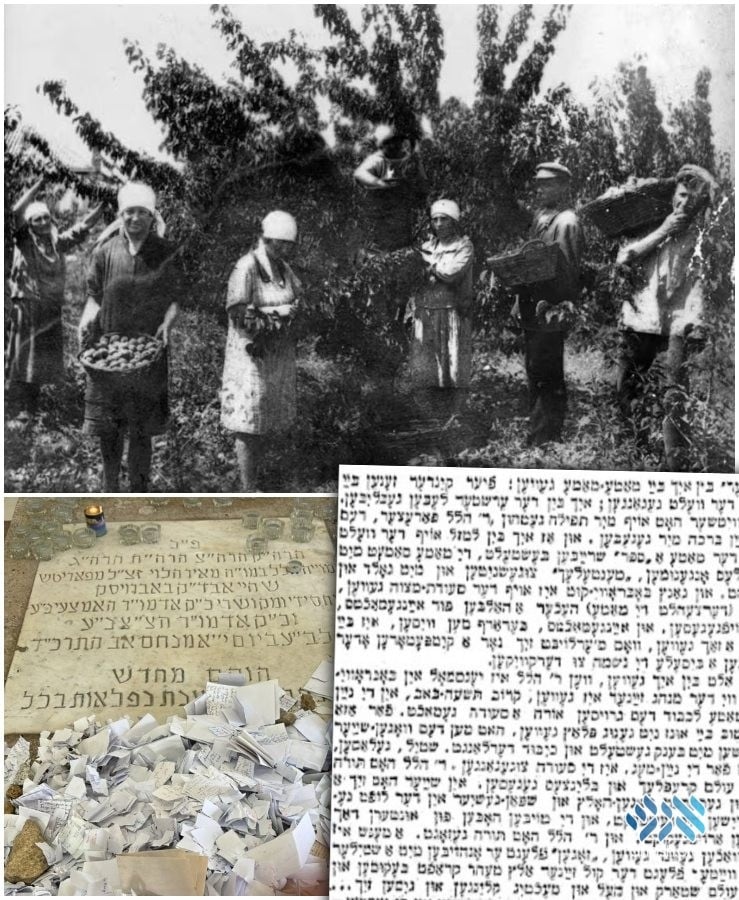י״א אב ה׳תשפ״ד | August 15, 2024
A Young Boy’s Memories of Reb Hillel Paritcher
In honor of the 160th yahrtzeit of the legendary chossid of all time, R. Hillel Paritcher, we present a rare personal account of his remarkable personality and activities preserved in an old Yiddish newspaper.

In honor of the 160th yahrtzeit of the legendary chossid of all time, R. Hillel Paritcher, we present a rare personal account of his remarkable personality and activities preserved in an old Yiddish newspaper.
By Shmuel Super
Thursday, 11 Menachem-Av, is the 160th yartzeit of Reb Hillel Paritcher. Arguably the most famous chasid in Chabad history, Reb Hillel was a devoted chasid and mekushar of the Mitteler Rebbe and Tzemach Tzedek, and also universally respected as a tzadik in his own right.
The rov of Paritch and later Bobroisk, Reb Hillel would spend the months of Av and Elul traveling among the Chassidishe farming settlements in the Cherson region as a shadar for the Tzemach Tzedek. He taught Chassidus to the farmers, guided them in avodas Hashem, and collected money for maamad and other tzedakah purposes. Many sources note how he would also give berachos for people’s material needs—an unusual practice for a chossid.
Reb Hillel passed away on Shabbos Nachamu, 11 Menachem-Av during his yearly visit to Cherson, and was buried there. An Ohel was built over his kever, and Yidden would flock to the site to daven. In recent years the shluchim to Cherson have revived the custom of visiting Reb Hillel’s kever on his yartzeit.
The following account gives us an intimate window into Reb Hillel’s activities in the Cherson region, and the incredible respect the Chassidim had for him. The author, Shmuel Shimon Frug, was born in 5620 (1860) in the small farming town of Bobrovy-Kut, in the Cherson district. Frug notes with regret that he doesn’t remember Reb Hillel personally, as he was just a child of four years old when Reb Hillel passed away, but he records the story as he heard it later from his parent.
Frug’s birth and early years were deeply tied to Lubavitch, but in his adult life he drifted very far away, becoming a well-known secular writer and poet, writing in Russian, Hebrew, and Yiddish. Nevertheless, Frug maintained warm feelings for his Chassidishe youth, and depicted them movingly in a short-lived autobiographical series he began to write for the Warsaw-based Der Moment Yiddish newspaper in 1914. Our account is drawn from this series. Frug died in 1916.
Here is Frug’s account in English translation, followed by some comments on some of the points mentioned. In producing the English translation we were assisted by a Hebrew translation recently published by Shlomo Barda and Sholem Popper in Merchav, journal 3, pp. 223-224.
***
As a child, my parents were anxiously protective of me. They had previously had four children who passed away in their infancy, and I was the first to survive. Reb Mendele of Lubavitch had davened for me, and Reb Hillel Paritcher, the Rebbe’s meshulach, gave me his berachah.
When I was born with good fortune, my father arranged for a Sefer Torah to be written. My mother took silk and velvet fabrics, cut them into mantelach, and embroidered them with gold and silver decorations. The entire town of Bobrovy-Kut came to the seudas mitzvah. Besides for meat and fish, my mother related, more than half a pood [18 pounds] of jam was consumed, kein ayin harah. It should be noted that jam was a precious commodity in our settlement, given only to a woman after childbirth or to a sick person to revive their spirit.
I was nine months old when Reb Hillel came to visit Bobrovy-Kut, as was his custom close to Tishah Beav, during the Nine Days. My father prepared a seudah in honor of the great guest. Our house was not large enough to accommodate such a meal, so they swept the wagon shed, set up benches and tables, and served refreshments.
The meal was conducted quietly and calmly, as is befitting for the Nine Days. Reb Hillel said Torah, and the assembled ate kreplach and blintzes. In the shed, a light scent of painted wagon wood and harnesses mixed with the smell of fresh hay, and the doves peeked out from their nests. And Reb Hillel said Torah. He was a man of very weak health, and his Torah recital began in a quiet voice, but as time passed his voice grew stronger until his words flowed to the listeners, ringing with great clarity and power… With the scent of the fields, the surrounding green hills, and the doves in their nests—the scene was like something out of the Biblical era.
Before his departure, Rabbi Hillel gave me a bracha and placed a kameia around my neck, instructing my mother to guard the kameia as if it were the apple of her eye—the kameia had been handwritten by Reb Mendele, and its value was beyond measure.
Besides the kameia, my mother also employed another segulah for longevity—a ring and an earring. They would collect pieces of silver from two or three couples whose children had survived, melt the silver, and forge it into a ring and an earring, which the child would then wear. So in addition to the kameia, I soon received the silver jewelry. I wore them for a long time and took pride in them, as in all of Bobrovy-Kut, no one else had such jewelry. . . .
The last time Rabbi Hillel visited our home was three years later, when he stayed in our home for two full days. That year, a terrible blight struck our fields. Reb Hillel, who usually collected maamad for the Lubavitcher, personally contributed a certain amount to the farmers this time, and conferred with my father about how to best distribute the money. He stayed in our home this whole time, yet strangely enough, not a single line of his face or figure remains in my memory.
***
Frug describes having being given a kameia by Reb Hillel, and asserts that it had been written by the Tzemach Tzedek. Corroboration for Reb Hillel distributing kameios can be found in the stories of R. Yechiel Halperin, a shadar of the Rebbe Maharash and Rebbe Rashab.
R. Yechiel writes that he heard from the chasid R. Yaakov Henkin that in 5623 (this should read 5624) R. Hillel gave a kameia to a man in Cherson who asked him for a berachah for children and instructed him to open the kameia at the boy’s bris. Reb Hillel passed away a few days later, but sure enough, the couple was soon blessed with a son. When they opened the “kameia” at the bris they found that the paper inside read simply: vayikarei shemo beyisrael Hillel (Migdal Oz, Maasei Avosai p. 196).
However, we have no corroboration for the Tzemach Tzedek—or any of the other Chabad rebbes—ever writing a kameia, so this detail in the account should be rejected.
Frug also mentions another once-popular segulah for children born to families with a history of infant mortality—wearing special rings. In Chabad circles, this practice is known from R. Menachem Tzvi Rivkin of Manchester, who wore an earring his father received from the Rebbe Maharash all his life.
*
Der Moment, June 19, 1914 – Courtesy of the Historical Jewish Press website—www.Jpress.org.il—founded by the National Library and Tel Aviv University.

Der Moment, June 19, 1914 - Courtesy of the Historical Jewish Press website—www.Jpress.org.il—founded by the National Library and Tel Aviv University.

Der Moment, June 19, 1914 - Courtesy of the Historical Jewish Press website—www.Jpress.org.il—founded by the National Library and Tel Aviv University.


You seem to accept that R Hillel gave out Kemeias. Do you have corroborating evidence? In any event, that must have been with the knowledge of the Maharash and the Tzemach Tzedek, surely. If so, and I realise Kemeias are not exactly mainstream Lubavitch, in the absence of anything to the contrary, why wouldn’t you accept his Mesiach Lefi Toomo that one was written by the Tzemach Tzedek? Practices of Rebbes have changed from the Alter Rebbe onwards … for example, his mode of davening was nothing at all like current practice.
some might not realize, but the practice of kameias was in fact common and still is common. Starting in shulchan aruch hilchos shabbos simman 301. Think about rebbe dollars. The frierdiker rebbe gave soldiers in the american army coins to sow in their tzitzis (see igros kodesh in several places).
There is several letters from the rebbe about wearing a double wrapped mezuzah.
However, this is interesting because it was an actual written kamiea. This needs to be properly researched.